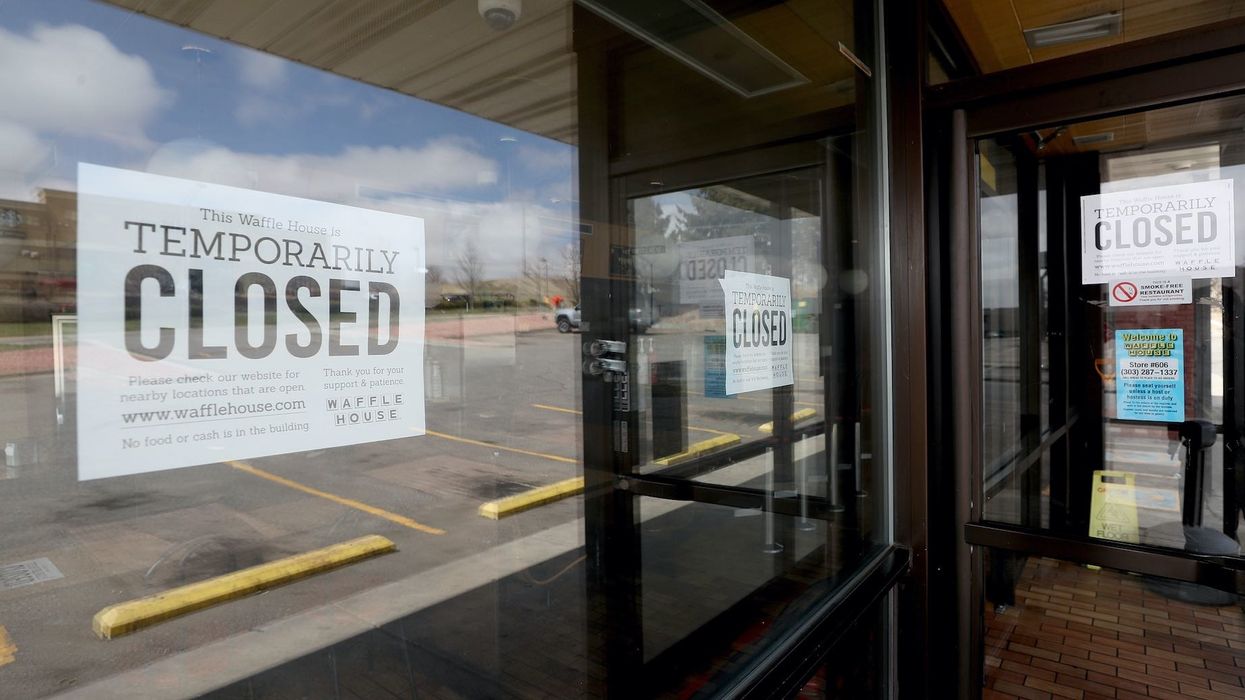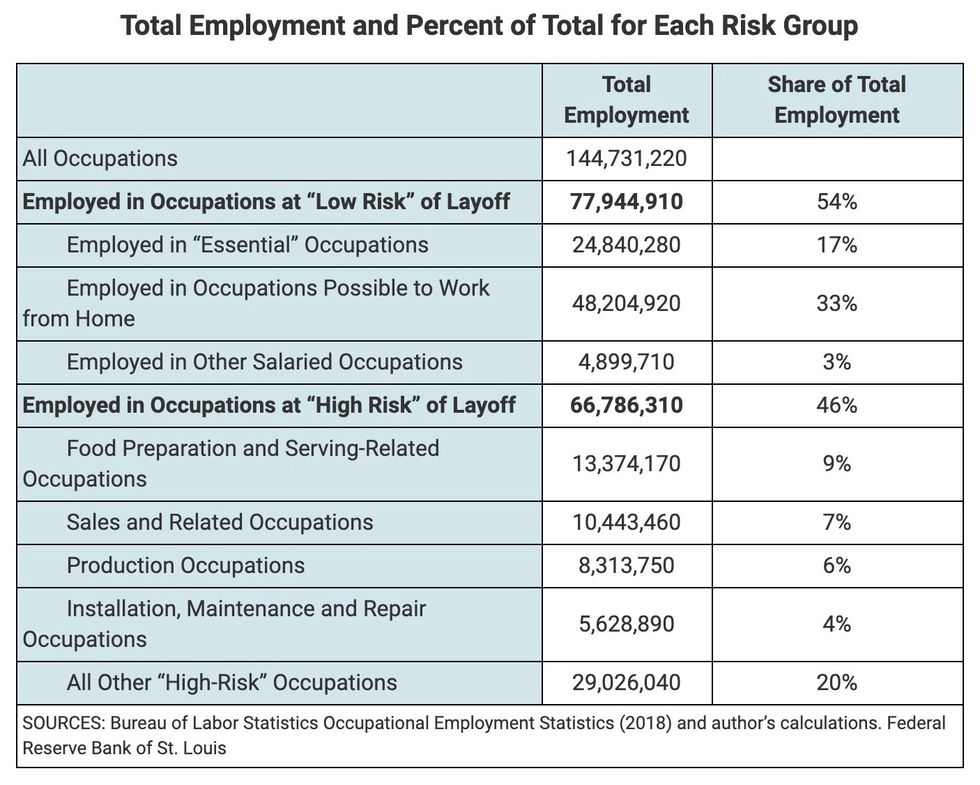
Photo by Matthew Stockman/Getty Images

How bad could it all get?
A recently posted analysis from a Federal Reserve economist estimated that the U.S. could see in excess of 47 million job losses related to the coronavirus crisis and an unemployment rate that tops 32% in the coming months.
On Thursday, first-time weekly jobless claims hit a record high of 3.3 million, more than double the number of losses experts had projected.
Last week, Migeul Faria e Castro, an economist at the Federal Reserve Bank of St. Louis, posted a "back-of-the-envelope estimate" for what kind of job-loss numbers and unemployment figures the country could see by the end of the second quarter.
Citing fellow Fed economist Charles Gascon, Castro noted that nearly 67 million Americans are working in jobs "at high risk of layoff due to social-distancing measures."
Combining that figure with other estimates about jobs that have a high risk of being lost, Castro estimated that 47.05 million people would be laid off during the second quarter of 2020.
Castro then extrapolated that with 47 million lost jobs, the U.S. would have an unemployment rate of 32.1% by the end of June.
To calculate which workers are "at high risk of layoff," Gascon said he classified the 808 BLS-detailed occupations based on three criteria:
He found that 46% of workers appear to be in "high risk of layoff" jobs. Not surprisingly, the largest share (9%) of those jobs are in food prep or serving-related business; followed closely by jobs in sales (7%) — mostly retail workers.

Castro noted that it is the length of unemployment that matters more than the unemployment rate.
The suddenness of the virus and various governments' reactions to it have caused the sudden and coming spike in joblessness. However, if the virus peaks in a few weeks and businesses can reopen shortly thereafter, people could be going back to work by the end of the second quarter or beginning of the third.
Castro concluded:
Moreover, one can argue that the expected duration of unemployment matters more than the unemployment rate itself, especially if the recovery is quick (and so duration is short). These are very large numbers by historical standards, but this is a rather unique shock that is unlike any other experienced by the U.S. economy in the last 100 years.
(H/T: CNBC)